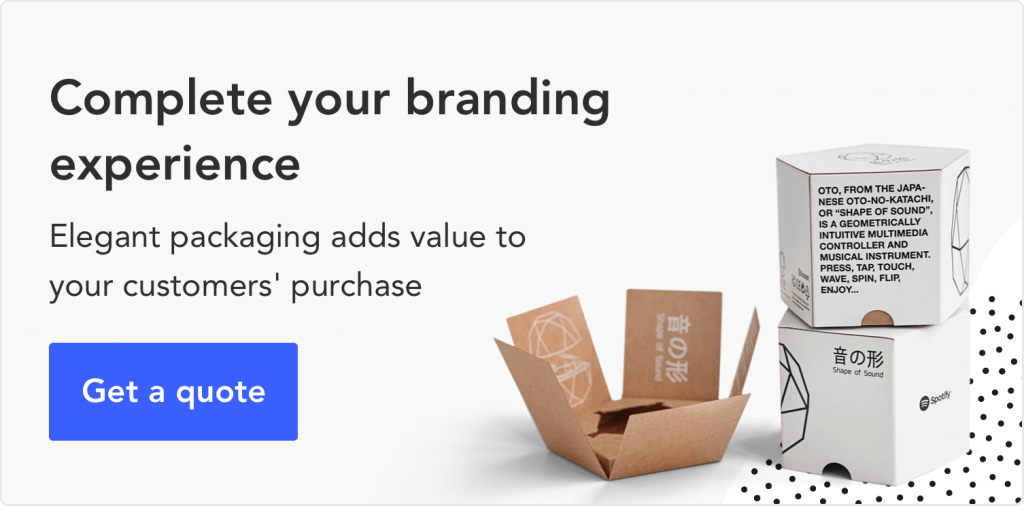4 Ecommerce Pricing Strategies To Help You Stand Out From The Crowd


Subscribe now! Receive 15% discount.
Don’t miss out – get 15% off your first order when you join the newsletter. It’s fast, free, and kinda smart.
You're now subscribed!
In this article:
The ecommerce world is crowded, and it’s not always easy to stand out from the crowd.
Many of the top-selling brands sell so much because their ecommerce pricing strategy is nothing more than competing on price.
As a result, many small businesses find it just too hard to compete against giants.
But with a bit of innovation, education, and trial and error, any size of business can thrive in this environment that's otherwise too fast to keep pace with.
There are a staggering number of ecommerce pricing strategies to help just about any brand with any product stand out from the noise.
In this post, you’ll learn why that's important, as well as how to:
- Sell popular products at competitive prices
- Personalize discounts
- Use stock information to improve profit margins
- Increase prices if you’re adding value
Learning all of these will take time, but eventually, you’ll see that pricing is only a problem when you don’t know enough about it.
Once you do, it becomes a powerful tool in your hands.
So let’s dive in.
Selling products at competitive prices.
It's important to list your site on Google Shopping, Tweakers, Ceneo, Idealo, and others like this, even if competing on price isn't your ideal ecommerce pricing strategy.
These price comparison sites—aka comparison shopping engines—have a tremendous number of visitors each month.

Visitors to these sites are mainly looking for two types of information:
- Where can I find this product?
- Who sells it at the best price?
Here's an example of a price comparison for the new Xbox from Polish price comparison site, Ceneo:

They serve mainly as price comparison engines. But they also provide information like discounts, percentage of the discounts, and the discounted deals.
And more are adding shipping costs, delivery options, payment options, and so on.
So the first thing to do, make sure they list your store.
Some of these sites are free, some charge a monthly/yearly fee, and some charge a certain listing fee per item. Regardless, they pay for themselves quite fast.
Start with your most popular products, products that are physically small and can be sent for free, or products you have a lot of experience selling.
Once it's listed your store visible to all those who’ve never heard of you but are interested in what you're selling.
Doing this will do more than just driving traffic, though.
Over time, bargain hunters will start to associate your store with competitive offers.
And don’t underestimate the number of people who are shopping for price.
87% of shoppers took part in a Google & Ipsos survey said knowing they got a good deal is important when choosing a retailer.
Protip: If your lowest possible price still isn't competitive, add value in the form of free express shipping.
The best part about this strategy is, you don’t have to invest in much.
And you can always check your referral traffic from your Analytics account to see if those websites actually bring you traffic.
Personalise discounts
Generic campaigns are not as effective as personalized ones.
Setting a store-wide discount is a quick way to eat into the profits of a small or medium ecommerce brand.
These discounts seem enticing when everyone else jumps on the holiday season discount frenzy train, but it's a quick way to eat into your back pocket.
In one study, Daqing Zhao, Director of Advanced Analytics at Macy’s, talks about a campaign he helped design for one of the early ecommerce websites, Wine.com.
He explains how they created a one-to-one email program by designing an algorithm called “preference matching”.
Zhao says these personalized emails increased revenue by 300 per cent relative to the generic emails that include static recommendations.
That’s huge.
So, how did they design such a successful campaign?
They built an algorithm that takes various input data:
- Time of purchase, product, the amount spent, and the associated campaign data for every purchase made on Wine.com
- Product profiles based on data like price, colour, country of origin, producer, etc.
- Taste profiles based on oak, sweetness, acidity, body, intensity, etc.
- Demographic data (age, gender, etc.) from email response click streams
- Self-reported data on preferences for wine types, drinking frequency, the purpose of buying, etc.
- Popularity and seasonality factors
The more behavioural data points a customer has, the more refined their profile was.
And they assigned “mentors” to new customers, which were existing customers with the most similar profiles.
Now, your ecommerce platform certainly provides some of the data that wine.com used.
It will more than likely also have plugins and apps that take care of all the processes and provide you with the output.
Send personalized discounts on products shoppers are interested in.
And almost all of the best ecommerce platforms allow you to cultivate data from various platforms and tools you use (i.e. your payment provider) via API integrations.
And of course, there are all-in-one marketing automation tools that give you everything you need to know about your customers.
One way or the other, you need to cultivate the data and offer relevant discounts to your existing customers.
Remember, 91% of shoppers say they’re more likely to shop with brands who remember them and their preferences.
That means personalized discounts not only lift purchase revenue. Over time, they also help you stand out from the competition.
Assess your competitors
Your competitors are probably the best thing to keep your brand working in the right direction.
And their stock info is beneficial.
If you track it, you can lift profit margins whenever there’s a chance - a unique opportunity that's not possible in the world of brick and mortar retail.
In the below example, you can see all these stores are charging more or less the same price.

Therefore you can’t ask $50 more than all your competitors. Well, you can, but that’ll cost you sales.
Instead, you can offer competitive prices—not necessarily the cheapest.
And having your competitors' stock and price info is incredible in that sense.
Knowing competitor stock levels gives you the ability to stay competitive but also improve profitability whenever you can.
Below you can see 5 stockists of the Fitbit Charge, 3 of which are out of stock.

With these stores out of stock, the 'lowest available price' has just increased, making it easier for you to be competitive.
To be able to do that, of course, they should track stock info.
And tracking competitors’ price and stock info will be even more useful in the long run.
If a product constantly runs out of stock on your competitors’ store, they're moving a lot of it and clearly can't keep up with demand.
This info can be beneficial before adding a product to your store. It can give you an idea of what’s hot and what’s not.
For another example, let’s say you’ve been monitoring your competitors for a while.
You've realized there’s no way you could offer a competitive price because your competitors have a significant cost advantage.
What do you do then?
Do you keep on selling that unprofitable product?
Or do you minimise the needed storage space, spend less on your ads and lower your shipping costs to make it profitable?
This is a lot of work and cost-cutting to make a product profitable. So you need to pick your battles wisely. Having a wide product range is every seller’s dream, but it's not always feasible.
If you expand your range as you grow, you’ll be able to buy in bulk and leverage volume discounts.
Increase your customer loyalty with customised e-commerce packaging.
Trusting your increasing popularity and growing sales, suppliers will be more willing to give you better prices, making your ecommerce pricing strategy more competitive.
Increase prices if you’re adding value
60% of shoppers in a survey said the COVID-19 pandemic somewhat changed their buying behaviour.
Many households experienced financial difficulties in 2020.
Naturally, they cut spending.
Considering the impact of the pandemic hasn’t fully been felt yet, retailers should really focus on understanding the change in a customers’ willingness to pay.
For instance, curbside pickup is incredibly popular this year because shoppers don’t want to risk themselves by going to a physical store, but they also don’t want to wait for the home delivery.
This is just one example of the impact of a pandemic on our behaviour.
The bottom line is this: Pay close attention to what your customers and prospects need.
Adding curbside pickup will no doubt result in a price increase to facilitate the creation and management of a safe pickup area.
In a time like this, if you’re going to invest in something that’ll drive your costs up, make sure it’s something your customers and prospects will get excited about.
This level of transparency is so valuable in the eyes of customers.
Parting Words
Ecommerce pricing strategies offer you endless opportunities. You can expand your customer base, build loyalty and accelerate your growth with these data-driven pricing strategies.
Pricing is generally harder to excel at than other pillars of marketing, but there’s no reason you shouldn’t give these strategies a try.
Remember, e-commerce is a fast-paced, fiercely competitive landscape in you can easily get lost.
That’s why you need to rely on data instead of your gut.










